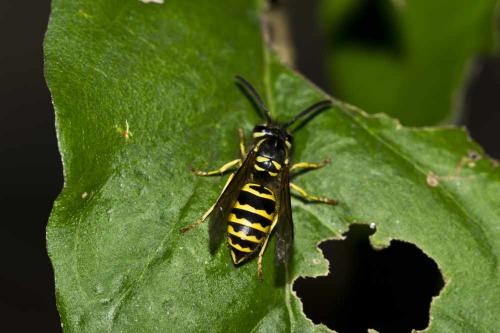Yellowjackets

It looks like the Yellowjack has two sets of antenna, but that is just shadows.
Yellowjackets build a paper nest usually found under eaves; but also found within trees, shrubs and in the ground. When the season ends, only inseminated queens will winterover, many times in woodpiles so be careful when bringing in wood for the winter. As they warm up they become active again thinking it is springtime and you could have a yellowjacket flying around inside your home. As the fall comes to a close, all the remaining colony will die. When the weather warms in the spring the queens will wake up and begin a new nest.
In the Spring the inseminated queen emerges and builds her own nest. She will not inhabit a previous nest, although she may overwinter in the nest. Her nest is constructed of chewed up cellulose material which she will begin, and after worker bees are developed, they will take over that job and she will only lay eggs from that time on. The nest is made up of cells, each one contains an egg which is fed protein material and nectar. These cells are then covered with a paper envelope. The nest will continue to grow throughout the summer season. In the fall, at the end of the season, the nest will die, which includes the founding queen and workers. The exception is that all the queens and males which were reared at the end of the season will fly away and mate. The males soon die because their throats are closing down, not allowing them to eat. Needless to say, they are angry and will sting without being provoked. The inseminated queens will winterover for the following season and the cycle continues next year.
The Yellowjacket can sting multiple times per bee. During the season they may sting, especially if you are near the entrance to their nest or in their line of flight to their nest.




 Follow
Follow

